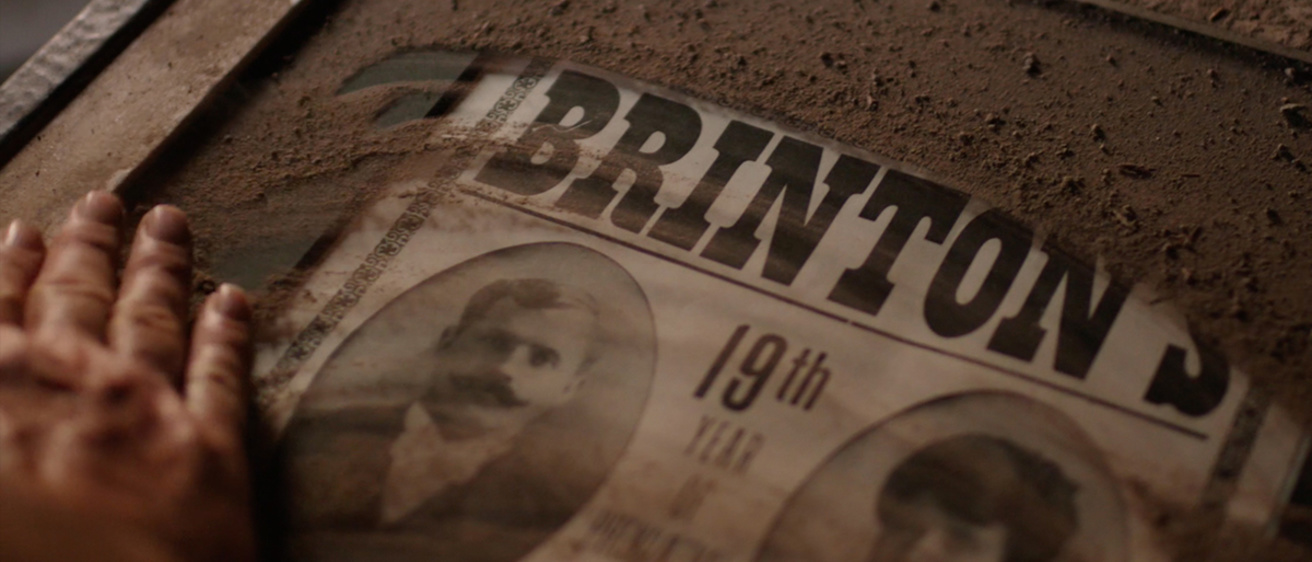A documentary about a collection of century-old films preserved with the help of the University of Iowa will have its world premiere at the American Film Institute’s prestigious AFI DOCS film festival in Washington, D.C., in June.
Saving Brinton is one of 103 films from 28 countries that will be screened during the festival, June 14–18 at theaters in Washington, D.C., and Silver Spring, Maryland. The documentary is produced by Iowa City filmmakers and University of Iowa graduates Tommy Haines (BA cinema and comparative literature ’05) and John Richard (BS environmental science ’04), along with Andrew Sherburne.
Saving Brinton tells the story of the Brinton Collection, 16 reels of commercial films produced in the late 19th and early 20th centuries that were saved from the landfill by Washington, Iowa, resident Mike Zahs. Zahs eventually brought the collection to the UI Libraries’ Special Collections, which helped preserve the fragile, aging material.
The films originally belonged to W. Frank Brinton, who lived in Washington and purchased the movies from production companies such as Lumiere, Pathe, and Edison. He then toured small towns in the Midwest and Texas, showing the films in local theaters, opera houses, or, if the community didn’t have a natural venue, setting up a tent in the town square.
The content was typical of films of the time—most last just a few minutes or even a few seconds. They’re simple and unsophisticated by today’s standards, mostly produced for their novelty value for an audience that had seen few moving pictures before, if at all. They show re-creations of bank robberies, random scenes of urban streets, county fairs, chases, and international travelogues. There are street scenes from Cairo, Egypt, and animals at the London Zoo. There are also early “newsreels” of Theodore Roosevelt at a rally or soldiers being drilled before shipping off to the Spanish–American War. Some do tell stories, though very simply, such as the tale of a group of people riding a hot air balloon that’s hit by lightning and crashes into the ocean, who are then rescued. The entire story lasts less than a minute.
Eventually, Brinton closed his business in 1909 and put the films in his home’s basement, where they sat untouched for decades after his death in 1919. They later made their way to the home of his widow’s executor; they came to Zahs’ attention after the owner put the films and a load of other belongings on the curb to be taken to the landfill when he sold his house in 1981. Zahs saved not only the films—some of which are of movies thought lost to time—but also an array of accounting ledgers, marketing posters, ticket stubs, and other documents that show a thriving film business in the Midwest from its earliest days. That collection also is archived in the UI Libraries’ Special Collections.
Among others, the documentary features Greg Prickman, director of the UI Libraries’ Special Collections, and Rick Altman, emeritus professor of cinema and comparative literature at the UI.
Other documentaries that will be screened during the AFI festival include An Inconvenient Sequel: Truth to Power, the follow-up to Al Gore’s An Inconvenient Truth; Whitney: Can I Be Me, a profile of the life and death of singer Whitney Houston; and Bill Nye: Science Guy, a profile of the TV personality who now advocates for science education.
